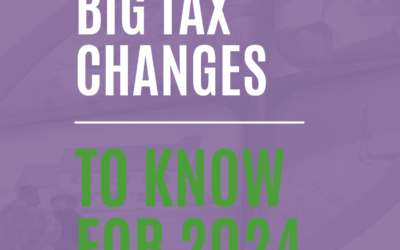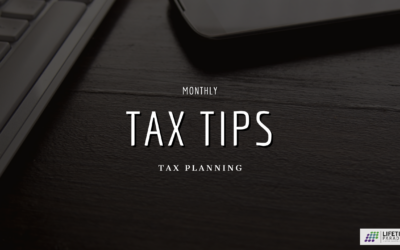Tax Planning
The Cost-of-Living Adjustment and What it Means for You
Each year, the Social Security Administration (SSA) announces the cost-of-living adjustment for the next year. Whether you are retired or not, you should be aware of what the changes mean.
In October the Social Security Administration announced that the cost-of-living adjustment (COLA) for 2021 is 1.3%. The increase shows up in beneficiaries’ January checks.
In November, the Centers for Medicare and Medicaid Services (CMS) announced Medicare premiums for 2021. The Part B base premium will be rising 2.7%, to $148.50, up $3.90 from $144.60 in 2020. The income-related monthly adjustment amount (IRMAA) for Part B and Part D will be going up by a few dollars for all the tiers. Inflation adjustments raised the income tiers only slightly: the IRMAA now starts at $88,000 for single individuals and $176,000 for couples.
The Social Security COLA translates to an extra $13 on a $1,000 benefit, which is more than the $3.90 increase in the Part B premium. So although very few people will be “held harmless” from paying the full Medicare premium (their benefit would have to be below $300 in order for the COLA to be less than the $3.90 rise in the Medicare premium), part of their COLA is eroded by the increased premium. For example, a person with a $2,000 Social Security benefit would get $26 more with the COLA, but $4 would be taken away with the higher Part B premium, leaving them with a net 1.1% COLA.
Nearly all Medicare beneficiaries affected by IRMAA should see their full Social Security COLA this year. Three years ago CMS added a new income tier which forced those with incomes between $111,000 and $138,000 ($222,000 to $276,000 for couples) to pay a higher income-related monthly adjustment amount. The IRMAA exceeded the COLA, but too bad, because anyone subject to the IRMAA is not held harmless.
Maximum benefit
The national average wage index rose 3.75%. This brings the maximum wages taxable for Social Security up to $142,800, from $137,700 in 2020. Wages above that amount are not subject to Social Security taxes. (They are, however, still subject to Medicare taxes.)
On a more technical note, the increase in the national average wage index affects the indexing factors and “bend points” that will be used to determine the primary insurance amount (PIA) for individuals born in 1959 who will be turning 62 in 2021. Bend points will increase to $996 and $6,002 from $960 and $5,785, respectively.
The PIA for a person born in 1959 who had maximum earnings since age 22 is $3,262.70. This is the amount a person turning age 62 in 2021 will receive if they apply at their full retirement age (FRA) of 66 and 10 months. But starting in 2022, COLAs will be added to this amount, so by the time they get to FRA, the amount will be higher. If they apply at 62, they receive a reduced benefit of only 70.83% of the PIA. (We are starting to see the effects of the higher FRA phase-in, as the age-62 benefit is now less than 75% for anyone whose FRA is over 66—on its way down to 70% for those born in 1960 or later.)
The SSA fact sheet says that the maximum benefit for a worker retiring at full retirement age will be $3,148. This is a bit misleading, because they are applying 2021 bend points to someone who is FRA—as if their PIA is calculated at FRA and not age 62. In truth, a person who turns FRA in 2021 had their PIA calculated when they turned 62 in 2017. Using the bend points for that age cohort ($885 and $5,336), the maximum PIA worked out to be not quite $3,000. Adding four years of COLAs (2.0%, 2.8%, 1.6%, and 1.3%) would bring the benefit up to $3,148. As far as the maximum benefit is concerned, this explanation is the more accurate one. Ignore the one on the fact sheet.
Earnings test
The “earnings test” is a calculation for withholding benefits when a Social Security recipient is under FRA and still working (earning income). The thresholds for 2021 will be $18,960 ($1,580 per month) and $50,520 ($4,210 per month), up from $18,240 ($1,520 per month) and $48,600 ($4,050 per month) in 2020.
If a person under FRA applies for benefits, they will be asked how much they expect to earn during the rest of the year. If they are fully retired and expect to have no further earnings, none of their benefits will be withheld, regardless of how much they earned prior to application. If they do expect to have earnings, they will be under the monthly earnings test for the remainder of the calendar year. If they earn more than $1,580 in any month, their benefit for that month will be withheld. Then starting with January of the following year they will be under the annual earnings test. Again, they will be asked how much they expect to earn during the year. SSA will subtract the first threshold (the $18,960 adjusted for next year’s COLA), divide by 2, and withhold as many checks as it takes to work off that amount. They will keep doing this every year until the year the person turns FRA. In that year, in the months leading up to the FRA month, the second threshold (the $50,520, which will be higher then due to COLAs) will be applied: SSA will subtract that threshold, divide by 3, and withhold as many checks as it takes to work off that amount. The month the person turns FRA, there will be no further withholding.
When the person turns FRA, the benefit will be adjusted to remove the actuarial reduction for those months in which a check was withheld. For example, if the PIA is $2,000 and someone with a full retirement age of 66 and ten months files at age 62, the benefit will be $1,416 ($2,000 x .7083). This represents an actuarial reduction of $584 over 58 months, or about $10 per month. For each month the check was withheld, $10 will be added to the benefit. So, for example, if a person had a total of 26 checks withheld, their new benefit would be $1,416 plus $260 (26 x $10), or $1,675. With respect to those withheld benefits, it’s as if they had applied at FRA instead of age 62. Once they turn FRA, they can voluntarily suspend the benefit to build 8% annual delayed credits to age 70.
The earnings test can be a hassle for everyone, and in general we encourage everyone who’s still working to wait until they stop working or turn FRA to apply for benefits. The only exception would be a widow who would be switching to a different benefit (retirement to survivor or vice versa) and would therefore not be receiving the adjusted benefit long enough to reap the full FRA-year adjustment. Of course, every situation is unique, and you should talk to a financial proessional to determine your best time to claim Social Security.
Statement estimates
Social Security statement estimates probably won’t change that much because estimates are stated in today’s dollars anyway. But it’s worth noting that for workers under age 62, who have not had their PIA calculated yet, behind the scenes are the machinations of some nice benefits by the time they get to claiming age. Over the next ten years, the trustees estimate that the average wage index will rise by more than 4% a year. If the estimates bear this out, it means that the indexing factors and bend points that will ultimately determine their PIA will be rising by over 4% a year. However, there is concern that the 1960 cohort (those turning 62 in 2022) will see a drop in their PIA compared to the 1959 cohort if the 2020 average wage index falls due to Covid. Congressional action would be required to fix this.
And, as always, if you plan to stop working at an age other than one of the Social Security claiming ages shown on the statement, your benefit will turn out to be different from the amount shown. Generally, those who work past claiming age are disappointed that their benefit won’t increase by as much as they’d hoped (especially if they already have 35 years of high earnings), while those who stop working early are disappointed that their benefit will turn out to be considerably lower than the amount shown on the statement. But the 4% annual increase in the indexing factors and bend points may turn out to somewhat mitigate the years of zero earnings prior to claiming.
Elaine Floyd, CFP®, is the Director of Retirement and Life Planning, Horsesmouth, LLC., where she focuses on helping people understand the practical and technical aspects of retirement income planning.
IMPORTANT
The information contained in this newsletter is for general use and educational purposes only.


Your Co-Owned Business Probably Needs a Buy-Sell Agreement
Tax PlanningBradford Tax InstituteSay you’re a co-owner of an existing business. Or you might be buying an existing...
Big Tax Changes to Know for 2024
Financial Guides2024 has brought some big tax changes with it. It’s essential to stay informed about these...
The Smart Tax Planning Newsletter March 2024
Tax PlanningIn This Issue: IRAs for Young Adults Get Up to $32,220 in Sick and Family Leave Tax Credits New Crypto Tax...






